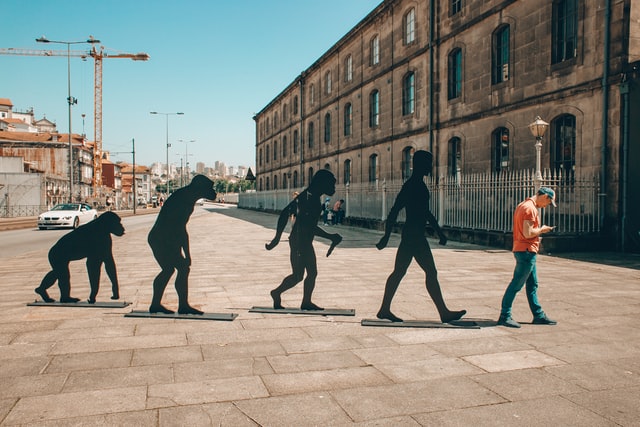Evolving a Method

As a graduate student in 1999, I trained with futurists in anticipatory ethnography. The method they taught was fascinating and exciting because it probed the possible futures of socio-cultural systems. This was my first experience with a structured process to rigorously explore the future. I was hooked. The process resonated with my worldview and fed my curiosity.
The type of anticipatory ethnography I learned relied on a concoction of qualitative research tools such as in-person interviews framed by a set of hand-drawn conceptual diagrams and recorded with a cassette tape recorder so the interview could be later transcribed. Analysis blended techniques found in grounded theory and thematic analysis and was conducted with a ledger-sheet and colored pens to track themes, insights, and observations.
My mentors used anticipatory ethnography to explore big picture issues like the future of a country, a technology or a component of human interaction – important but somewhat broad topics. Their research approach was decidedly academic and their results were mostly descriptive, lacking practical interventions for real change. The whole enterprise was geared for book and article publication. It became increasingly clear to me that this method had enormous potential beyond academics. I became a believer that anticipatory ethnography could guided effective, responsive, and sustainable change, it just needed to evolve.
My first chance to evolve the method happened in the early 2000's when a philanthropic group wanted to innovate a new future for funding an emerging social equity issue called the "digital divide." With strong funding and an expectation for measurable policy results, I began the process of shaping the method into a practical tool to change the future. Since then, I've applied evolving versions of the method in hundreds of projects. Nearly every project trying something new, something different. Three key aspects to evolve the method have emerged as persistent challenges:
- Cost: Projects were costly because interviews were conducted in-person and travel was expensive. Also, because the method required so much labor, the cost per interview ranged ranged between $3,000 and $5,000.
- Labor: The original method required a lot of time for data collection, analysis, and validation. Excluding travel time, each interview required 10 to 20 hours of labor.
- Impact: Projects produced long academic narratives describing possible, preferred, and probable futures, often hundreds of pages in length. Perfect for journal articles and books; less than perfect for designing real impact – no one has the time to fully absorb the results.
After decades of tweaking, revising, and experimenting, I am pleased by the evolved method we use at Futures Research. Below are a few areas we've successfully evolved so far. While many of these changes involve the integration of new technologies, the most significant changes have been methodological.
- Project Design: How a project is framed with the client, definition of intended application of results, purposeful selection of participants, and clarification of expectations.
- Participant Preparation: An intentional process introduces a participant to the process of futures thinking and the articulation of ideas about the future.
- Conceptual Models: A framework of flexible, scalable meaning-making structures for data collection, analysis, and results.
- Analytical Layering: A multi step iterative process of developing concise meaning from project data.
- Ideation: The development, revision, and prioritization of ideas about the future that can be used to create an applicable narrative of future change.
- Change Management: A simplified process to link ideas with changes that are broken down in to doable, assignable, and measurable actions.
By focusing on the challenges of cost, labor, and impact, we're making it easier and more common for people to think about and guide their futures. Our method has come a long way and there's a much longer way to go.